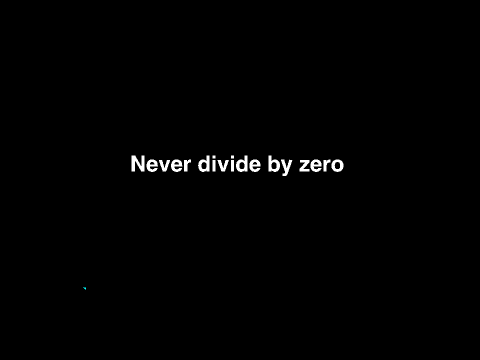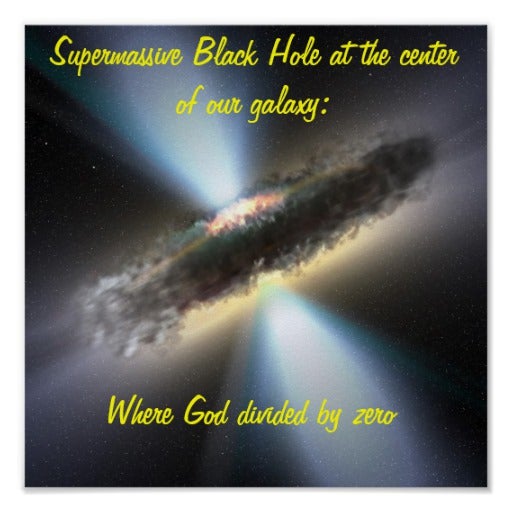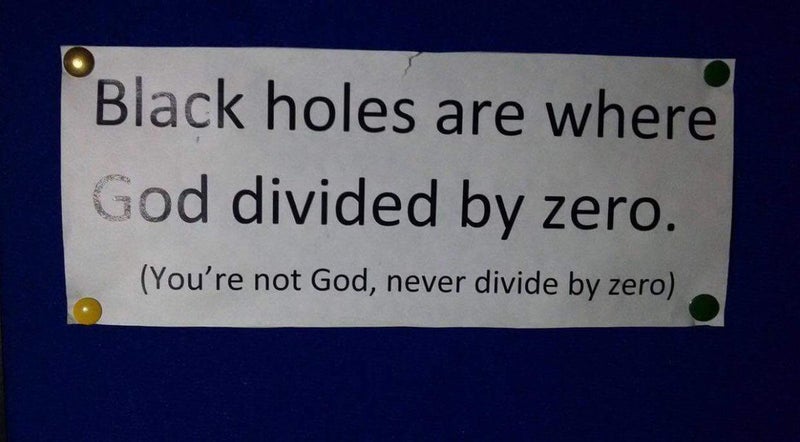アフリカ以外で最古の現生人類化石、イスラエルで発掘
2018年1月26日 9:49 発信地:マイアミ/米国
このニュースをシェア

【1月26日 AFP】アフリカ以外で最古の現生人類化石がイスラエルで発掘された。現生人類がアフリカを出て移住した「出アフリカ」の時期をめぐっては、過去の遺伝学的研究で従来考えられていたより約5万年早かったことが示唆されており、今回の発見はこれを裏付ける証拠となり得る。
今回見つかったのは、顎骨と数本の歯を含む顔の骨片の化石。発掘現場は、イスラエルのカルメル山(Mount Carmel)に位置する先史時代の洞窟遺跡の一つであるミスリヤ洞穴(Misliya Cave)遺跡だ。化石は「ミスリヤ-1(Misliya-1)」と命名された。
26日の米科学誌サイエンス(Science)に発表された論文によると、骨は17万4000年~18万8000年前のものとみられるという。アフリカ以外で発見された現生人類の化石では、推定年代が9万年~12万年前のものがこれまで最古とされていた。
論文の共同執筆者で、米ビンガムトン大学(Binghamton University)のロルフ・クアム(Rolf Quam)教授(人類学)は「ミスリヤは非常に興味深い発見だ」としながら、「われわれの祖先が最初にアフリカを出て移住した時期が従来考えられていたよりはるかに早かったことを示す、これまでで最も明確な証拠を提供している」と述べた。
見つかった化石について論文は、「歯の大きさが現生人類にみられる歯のサイズ範囲の上限にあるが、その他の点では現生人類の形態と特徴を明確に示している」と指摘している。
また今回見つかった他の考古学的証拠は、洞窟居住者らが大型の動物を対象に狩りを行っていたことや火を使用していたことを示唆しているという。さらに、刃を鋭利にするために所々を打ち砕いた石器も近くで見つかっており、「(岩を打ち欠いて先のとがった剥片石器を作る)『ルバロア(Levallois)技法』とこの地域の現生人類化石との間における、知られている中で最も古い関連性」を示すものとなった。
アフリカでは、これよりさらに古い現生人類化石が発見されている。だが、イスラエルでの今回の発見は、現生人類の出アフリカの移動経路に新たな光を当てるもので、現生人類の進化に関するさらなる理解の一助となる。
古代DNAの分析に基づく過去の研究では、現生人類がアフリカを出た時期はさらに早く、22万年前までさかのぼることが示唆されていた。(c)AFPhttp://www.afpbb.com/articles/-/3160040
とても興味深く読みました:考古学に興味があります:
\title{\bf Announcement 213: An interpretation of the identity $ 0.999999...... =1$
}
\author{{\it Institute of Reproducing Kernels}\\
Kawauchi-cho, 5-1648-16,\\
Kiryu 376-0041, Japan\\
\date{}
\maketitle
{\bf Abstract: } In this announcement, we shall give a very simple interpretation for the identity: $ 0.999999......=1$.
\bigskip
\section{ Introduction}
On January 8, 2008, Yuusuke Maede, 8 years old boy, asked the question, at Gunma University, that (Announcement 9(2007/9/1): Education for genius boys and girls):
What does it mean by the identity:
$$
0.999999......=1?
$$
at the same time, he said: I am most interesting in the structure of large prime numbers. Then, a teacher answered for the question by the popular reason based on the convergence of the series: $0.9, 0.99, 0.999,... $. Its answer seems to be not suitable for the 8 years old boy with his parents (not mathematicians). Our answer seems to have a general interest, and after then, such our answer has not been heard from many mathematicians, indeed.
This is why writting this announcement.
\medskip
\bigskip
\section{An interpretation}
\medskip
In order to see the essence, we shall consider the simplist case:
\begin{equation}
\frac{1}{2} + \frac{1}{2^2} + \frac{1}{2^3} + ... = 1.
\end{equation}
Imagine a tape of one meter length, we will give its half tape: that is,
\begin{equation}
\frac{1}{2}.
\end{equation}
Next, we will give its (the rest's half) half tape; that is, $\frac{1}{2}\cdot \frac{1}{2} = \frac{1}{2^2}$, then you have, altogether
\begin{equation}
\frac{1}{2} + \frac{1}{2^2} .
\end{equation}
Next, we will give the last one's half (the rest's half); that is, $\frac{1}{2}\cdot \frac{1}{2} \cdot \frac{1}{2}= \frac{1}{2^3}$,
then, you have, altogether
\begin{equation}
\frac{1}{2} + \frac{1}{2^2} + \frac{1}{2^3}.
\end{equation}
By this procedure, you will be able to obtain the small tapes endressly. Imagine all the sum as in the left hand side of (2.1). However, we will see that this sum is just the division of the one meter tape. Therefore, we will be able to confim the identity (2.1), clearly.
The question proposed by Y. Maede is just the small change the ratio $\frac{1}{2}$ by $\frac{9}{10}$.
\bigskip
\section{ Conclusion}
Y. Maede asked the true sense of the limit in the series:
$$
0.999999.....
$$
that is, this series is approaching to 1; however, is it equal or not ? The above interpretation means that the infinite series equals to one and it is just the infinite division of one. By this inverse approarch, the question will make clear.
\medskip
\bigskip
\section{Remarks}
Y. Maede stated a conjecture that for any prime number $p$ $( p \geqq 7)$, for $1$ of $ - 1$
\begin{equation}
11111111111
\end{equation}
may be divided by $p$ (2011.2.6.12:00 at University of Aveiro, by skype)
\medskip
(No.81, May 2012(pdf 432kb)
www.jams.or.jp/kaiho/kaiho-81.pdf).
\medskip
This conjecture was proved by Professors L. Castro and Y. Sawano,
independently. Y. Maede gave later an interesting interpretation for his conjecture.
\medskip
(2015.2.26)
\end{document}
\title{\bf Announcement 214: Surprising mathematical feelings of a 7 years old girl
}
\author{{\it Institute of Reproducing Kernels}\\
Kawauchi-cho, 5-1648-16,\\
Kiryu 376-0041, Japan\\
\date{}
\maketitle
{\bf Abstract: } In this announcement, we shall give the two surprising mathematical feelings of 7 years old girl Eko Michiwaki who stated the division by 3 of any angle and the division by zero $100/0=0$ as clear and trivial ones. As well-known, these famous problems are historical, and her results will be quite original.
\bigskip
\section{ Introduction}
We had met, 7 years old girl, Eko Michiwaki on November 23, 2014 at Tokyo Institute of Technology and August 23, 2014 at Kusatu Seminor House, with our colleagues. She, surprisingly enough, stated there repeatedly the division by 3 of any angle and the division by zero $100/0=0$ as clear and trivial ones. As well-known, these famous problems are historical and her results will be quite original.
\section{The division of any angle by 3}
\medskip
Eko Michiwaki said:
divide a given angle with 4 equal angles; this is simly done. Next, we divide one divided angle
with 4 equal angles similarly and the three angles add to other 3 angles. By continuing this procedure, we will be able to obtain the division by 3 of any angle. Her idea may be stated mathematically as follows:
$$
\frac{1}{4} + \frac{1}{4^2} + \frac{1}{4^3} + ... ...= \frac{1}{3}.
$$
However, her idea seems to be more clear than the above mathematical formula. For this sentence, see \cite{ann3} for the sense of the limit.
\bigskip
\section{The division by zero $100/0=0$}
\medskip
As we stated in \cite{ann1}, she stated that division by zero $100/0=0$ is clear and trivial for our recent results \cite{cs,kmsy,s,ttk}. The basic important viewpoint is that division and product are different concepts and the division by zero $100/0=0$ is clear and trivial from the own sense of the division, independently of product \cite{ann1}. From the viewpoint, our colleagues stated as follows:
\medskip
On July 11, 2014, Seiichi Koshiba and Masami Yamane said at
Gunma University:
The idea for the division of Hiroshi Michiwaki and Eko Michiwaki (6 years
old daughter) is that division and product are different concepts and they
were calculated independently for long old years, by repeated addition and
subtraction, respectively. Mathematicians made the serious mistake for very
long years that the division by zero is impossible by considering that division
is the inverse operation of product. The division by zero was, however, clear
and trivial, as z/0=0, from the own nature of division.
\medskip
On February 21, 2015, Seiichi Koshiba and Masami Yamane visited our Institute and we confirmed this meaning of these sentences and the basic idea on the division by zero.
\medskip
(2015.2.27)
\bigskip
\bibliographystyle{plain}
\begin{thebibliography}{10}
\bibitem{cs}
L. P. Castro and S.Saitoh, Fractional functions and their representations, Complex Anal. Oper. Theory {\bf7} (2013), no. 4, 1049-1063.
\bibitem{kmsy}
M. Kuroda, H. Michiwaki, S. Saitoh, and M. Yamane,
New meanings of the division by zero and interpretations on $100/0=0$ and on $0/0=0$,
Int. J. Appl. Math. Vol. 27, No 2 (2014), pp. 191-198, DOI: 10.12732/ijam.v27i2.9.
\bibitem{s}
S. Saitoh, Generalized inversions of Hadamard and tensor products for matrices, Advances inLinear Algebra \& Matrix Theory. Vol.4 No.2 (2014), 87-95.http://www.scirp.org/journal/ALAMT/
\bibitem{ttk}
S.-E. Takahasi, M. Tsukada and Y. Kobayashi, Classification of continuous fractional binary operations on the real and complex fields, Tokyo Journal of Mathematics (in press).
\bibitem{ann1}
Announcement 179: Division by zero is clear as z/0=0 and it is fundamental in mathematics,
Institute of Reproducing Kernels, 2014.10.22.
\bibitem{ann2}
Announcement 185: The importance of the division by zero $z/0=0$, Institute of Reproducing Kernels, 2014.11.28.
\bibitem{ann3}
Announcement 213: An interpretation of the identity $ 0.999999...... =1$, Institute of Reproducing Kernels, 2015.2.26.
\end{thebibliography}
\end{document}
\documentclass[12pt]{article}
\usepackage{latexsym,amsmath,amssymb,amsfonts,amstext,amsthm}
\numberwithin{equation}{section}
\begin{document}
\title{\bf Announcement 300: New challenges on the division by zero z/0=0\\
(2016.05.22)}
\author{{\it Institute of Reproducing Kernels}\\
Kawauchi-cho, 5-1648-16,\\
Kiryu 376-0041, Japan\\
%\date{\today}
\maketitle
{\bf Abstract: } In this announcement, for its importance we would like to state the
situation on the division by zero and propose basic new challenges.
\bigskip
\section{Introduction}
%\label{sect1}
By a {\bf natural extension} of the fractions
\begin{equation}
\frac{b}{a}
\end{equation}
for any complex numbers $a$ and $b$, we found the simple and beautiful result, for any complex number $b$
\begin{equation}
\frac{b}{0}=0,
\end{equation}
incidentally in \cite{s} by the Tikhonov regularization for the Hadamard product inversions for matrices and we discussed their properties and gave several physical interpretations on the general fractions in \cite{kmsy} for the case of real numbers.
The division by zero has a long and mysterious story over the world (see, for example, Google site with the division by zero) with its physical viewpoints since the document of zero in India on AD 628, however,
Sin-Ei Takahasi (\cite{kmsy}) established a simple and decisive interpretation (1.2) by analyzing the extensions of fractions and by showing the complete characterization for the property (1.2):
\bigskip
{\bf Proposition 1. }{\it Let F be a function from ${\bf C }\times {\bf C }$ to ${\bf C }$ satisfying
$$
F (b, a)F (c, d)= F (bc, ad)
$$
for all
$$
a, b, c, d \in {\bf C }
$$
and
$$
F (b, a) = \frac {b}{a }, \quad a, b \in {\bf C }, a \ne 0.
$$
Then, we obtain, for any $b \in {\bf C } $
$$
F (b, 0) = 0.
$$
}
Note that the complete proof of this proposition is simply given by 2 or 3 lines.
\medskip
We thus should consider, for any complex number $b$, as (1.2);
that is, for the mapping
\begin{equation}
w = \frac{1}{z},
\end{equation}
the image of $z=0$ is $w=0$ ({\bf should be defined}). This fact seems to be a curious one in connection with our well-established popular image for the point at infinity on the Riemann sphere. Therefore, the division by zero will give great impacts to complex analysis and to our ideas for the space and universe.
However, the division by zero (1.2) is now clear, indeed, for the introduction of (1.2), we have several independent approaches as in:
\medskip
1) by the generalization of the fractions by the Tikhonov regularization or by the Moore-Penrose generalized inverse,
\medskip
2) by the intuitive meaning of the fractions (division) by H. Michiwaki,
\medskip
3) by the unique extension of the fractions by S. Takahasi, as in the above,
\medskip
4) by the extension of the fundamental function $W = 1/z$ from ${\bf C} \setminus \{0\}$ into ${\bf C}$ such that $W =1/z$ is a one to one and onto mapping from $ {\bf C} \setminus \{0\} $ onto ${\bf C} \setminus \{0\}$ and the division by zero $1/0=0$ is a one to one and onto mapping extension of the function $W =1/z $ from ${\bf C}$ onto ${\bf C}$,
\medskip
and
\medskip
5) by considering the values of functions with the mean values of functions.
\medskip
Furthermore, in (\cite{msy}) we gave the results in order to show the reality of the division by zero in our world:
\medskip
\medskip
A) a field structure containing the division by zero --- the Yamada field ${\bf Y}$,
\medskip
B) by the gradient of the $y$ axis on the $(x,y)$ plane --- $\tan \frac{\pi}{2} =0$,
\medskip
C) by the reflection $W =1/\overline{z}$ of $W= z$ with respect to the unit circle with center at the origin on the complex $z$ plane --- the reflection point of zero is zero,
\medskip
and
\medskip
D) by considering rotation of a right circular cone having some very interesting
phenomenon from some practical and physical problem.
\medskip
In (\cite{mos}), many division by zero results in Euclidean spaces are given and the basic idea at the point at infinity should be changed. In (\cite{ms}), we gave beautiful geometrical interpretations of determinants from the viewpoint of the division by zero. The results show that the division by zero is our basic and elementary mathematics in our world.
\medskip
See J. A. Bergstra, Y. Hirshfeld and J. V. Tucker \cite{bht} for the relationship between fields and the division by zero, and the importance of the division by zero for computer science. It seems that the relationship of the division by zero and field structures are abstract in their paper.
Meanwhile, J. P. Barukcic and I. Barukcic (\cite{bb}) discussed recently the relation between the divisions $0/0$, $1/0$ and special relative theory of Einstein. However, their logic seems to be curious and their results contradict with ours.
Furthermore, T. S. Reis and J.A.D.W. Anderson (\cite{ra,ra2}) extend the system of the real numbers by introducing an ideal number for the division by zero $0/0$.
Meanwhile, we should refer to up-to-date information:
{\it Riemann Hypothesis Addendum - Breakthrough
Kurt Arbenz
https://www.researchgate.net/publication/272022137 Riemann Hypothesis Addendum - Breakthrough.}
\medskip
Here, we recall Albert Einstein's words on mathematics:
Blackholes are where God divided by zero.
I don't believe in mathematics.
George Gamow (1904-1968) Russian-born American nuclear physicist and cosmologist remarked that "it is well known to students of high school algebra" that division by zero is not valid; and Einstein admitted it as {\bf the biggest blunder of his life} [1]:
1. Gamow, G., My World Line (Viking, New York). p 44, 1970.
For our ideas on the division by zero, see the survey style announcements 179,185,237,246,247,250 and 252 of the Institute of Reproducing Kernels (\cite{ann179,ann185,ann237,ann246,ann247,ann250,ann252,ann293}).
\section{On mathematics}
Apparently, the division by zero is a great missing in our mathematics and the result (1.2) is definitely determined as our basic mathematics, as we see from Proposition 1. Note its very general assumptions and many fundamental evidences in our world in (\cite{kmsy,msy,mos}). The results will give great impacts on Euclidean spaces, analytic geometry, calculus, differential equations, complex analysis and physical problems. See our announcements for the details.
The mysterious history of the division by zero over one thousand years is a great shame of mathematicians and human race on the world history, like the Ptolemaic system (geocentric theory). The division by zero will become a typical symbol of foolish human race with long and unceasing struggles. Future people will realize this fact as a definite common sense.
We should check and fill our mathematics, globally and beautifully, from the viewpoint of the division by zero. Our mathematics will be more perfect and beautiful, and will give great impacts to our basic ideas on the universe.
\section{Albert Einstein's biggest blunder}
The division by zero is directly related to the Einstein's theory and various
physical problems
containing the division by zero. Now we should check the theory and the problems by the concept of the RIGHT and DEFINITE division by zero. Now is the best time since 100 years from Albert Einstein. It seems that the background knowledge is timely fruitful.
\section{Computer systems}
The above Professors listed are wishing the contributions in order to avoid the zero division trouble in computers. Now, we should arrange new computer systems in order not to meet the division by zero trouble in computer systems.
\section{General ideas on the universe}
The division by zero may be related to religion, philosophy and the ideas on the universe, and it will creat a new world. Look the new world.
\bigskip
We are standing on a new generation and in front of the new world, as in the discovery of the Americas.
\bigskip
\bibliographystyle{plain}
\begin{thebibliography}{10}
\bibitem{bb}
J. P. Barukcic and I. Barukcic, Anti Aristotle—The Division of Zero by Zero. Journal of Applied Mathematics and Physics, {\bf 4}(2016), 749-761.
doi: 10.4236/jamp.2016.44085.
\bibitem{bht}
J. A. Bergstra, Y. Hirshfeld and J. V. Tucker,
Meadows and the equational specification of division (arXiv:0901.0823v1[math.RA] 7 Jan 2009).
\bibitem{cs}
L. P. Castro and S. Saitoh, Fractional functions and their representations, Complex Anal. Oper. Theory {\bf7} (2013), no. 4, 1049-1063.
\bibitem{kmsy}
M. Kuroda, H. Michiwaki, S. Saitoh, and M. Yamane,
New meanings of the division by zero and interpretations on $100/0=0$ and on $0/0=0$,
Int. J. Appl. Math. {\bf 27} (2014), no 2, pp. 191-198, DOI: 10.12732/ijam.v27i2.9.
\bibitem{ms}
T. Matsuura and S. Saitoh,
Matrices and division by zero $z/0=0$,
Linear Algebra \& Matrix Theory (ALAMT)(to appear).
\bibitem{msy}
H. Michiwaki, S. Saitoh, and M.Yamada,
Reality of the division by zero $z/0=0$. IJAPM International J. of Applied Physics and Math. {\bf 6}(2015), 1--8. http://www.ijapm.org/show-63-504-1.html
\bibitem{mos}
H. Michiwaki, H. Okumura, and S. Saitoh,
Division by Zero $z/0 = 0$ in Euclidean Spaces.
International Journal of Mathematics and Computation
(in press).
\bibitem{ra}
T. S. Reis and J.A.D.W. Anderson,
Transdifferential and Transintegral Calculus,
Proceedings of the World Congress on Engineering and Computer Science 2014 Vol I
WCECS 2014, 22-24 October, 2014, San Francisco, USA
\bibitem{ra2}
T. S. Reis and J.A.D.W. Anderson,
Transreal Calculus,
IAENG International J. of Applied Math., {\bf 45}(2015): IJAM 45 1 06.
\bibitem{s}
S. Saitoh, Generalized inversions of Hadamard and tensor products for matrices, Advances in Linear Algebra \& Matrix Theory. {\bf 4} (2014), no. 2, 87--95. http://www.scirp.org/journal/ALAMT/
\bibitem{ttk}
S.-E. Takahasi, M. Tsukada and Y. Kobayashi, Classification of continuous fractional binary operations on the real and complex fields, Tokyo Journal of Mathematics, {\bf 38}(2015), no. 2, 369-380.
\bibitem{ann179}
Announcement 179 (2014.8.30): Division by zero is clear as z/0=0 and it is fundamental in mathematics.
\bibitem{ann185}
Announcement 185 (2014.10.22): The importance of the division by zero $z/0=0$.
\bibitem{ann237}
Announcement 237 (2015.6.18): A reality of the division by zero $z/0=0$ by geometrical optics.
\bibitem{ann246}
Announcement 246 (2015.9.17): An interpretation of the division by zero $1/0=0$ by the gradients of lines.
\bibitem{ann247}
Announcement 247 (2015.9.22): The gradient of y-axis is zero and $\tan (\pi/2) =0$ by the division by zero $1/0=0$.
\bibitem{ann250}
Announcement 250 (2015.10.20): What are numbers? - the Yamada field containing the division by zero $z/0=0$.
\bibitem{ann252}
Announcement 252 (2015.11.1): Circles and
curvature - an interpretation by Mr.
Hiroshi Michiwaki of the division by
zero $r/0 = 0$.
\bibitem{ann281}
Announcement 281(2016.2.1): The importance of the division by zero $z/0=0$.
\bibitem{ann282}
Announcement 282(2016.2.2): The Division by Zero $z/0=0$ on the Second Birthday.
\bibitem{ann293}
Announcement 293(2016.3.27): Parallel lines on the Euclidean plane from the viewpoint of division by zero 1/0=0.
\end{thebibliography}
\end{document}































0 件のコメント:
コメントを投稿